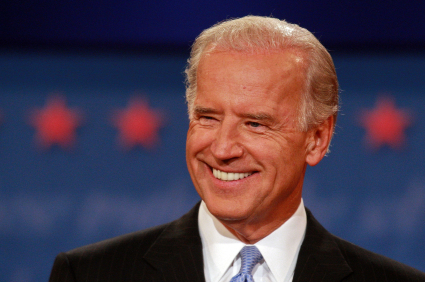 |
| Vice President Joe Biden gets close to people on the campaign trail. |
Out on the the campaign trail, Joe Biden is touchy feely, says a Sept. 23 New York Times article. And that appears to be a good thing. Biden is reported to not only shake people’s hands—like any vice-presidential candidate should—but he also may stroke a forearm while doing it. And Biden gets close—really close to voters that he meets informally with in diners or fast food restaurants, sometimes placing both hands on both shoulders and touching a cheek—or two.
This bold Biden body language doesn’t appear to freak anyone out. On the contrary. People eat it up. The Times reporter, Trip Gabriel, asked Kayleigh Durkin, 26, if she felt awkward when Biden held her hand “like a couple going steady.” She replied “No, I was excited. I love him.”
Biden’s close-quarters campaigning isn’t anything new to communicators, who know the importance of body language in getting points across with the public. Last June, PR News published body language tips from business coach and change management strategist Carol Kinsey Goman. It looks like Biden may have used them as a primer before the campaign ramped up:
-
Try a little tenderness. A man’s ability to hold his emotions in check is viewed as an advantage in business negotiations. But that doesn’t mean that men shouldn’t allow their feelings to show in other business situations. Whether your leader is promoting collaboration, building employee enthusiasm for a new corporate direction or addressing the negative consequences of a major change, showing emotion is not only a good thing: it is a powerful leadership strategy.
-
Look at people when they speak. The amount of eye contact a leader gives is especially telling if reserved only for those whose opinion they agree with. Women often cite a lack of eye contact as evidence that their male boss ‘‘doesn’t value my input.’’
-
Stop solving problems. Men’s discomfort dealing with emotion (and their brain’s innate response to it) leads them to immediately search for solutions, rather than understanding that sometimes people just need to be heard.
-
Lighten up. Men need to monitor their facial expressions, especially those that come across as intimidating, overpowering or deliberately forbidding. Such visual power cues are certainly useful in some situations, but just as certainly not useful in others. The problem is, hard looks can become habitual in all business dealings without realizing it. Once your leader becomes aware of that habit, however, he can begin to modify his facial expressions to suit the situation.
As a PR pro who interacts with people by the minute, how does your—or your leaderships'—body language stack up against Biden's?
Follow Scott Van Camp: @svancamp01
